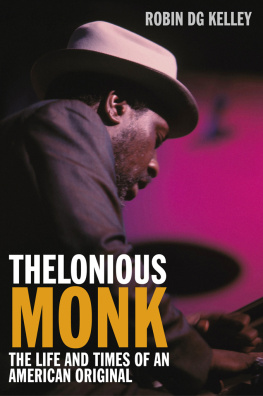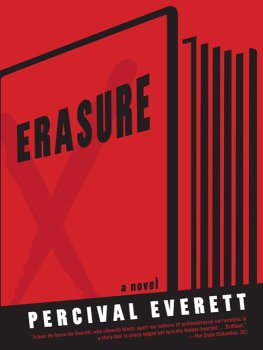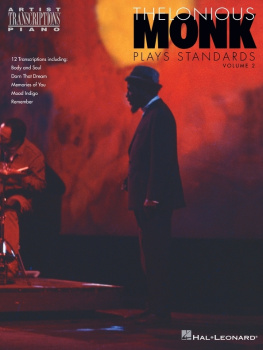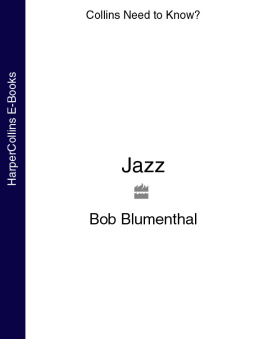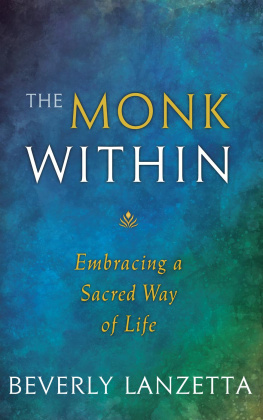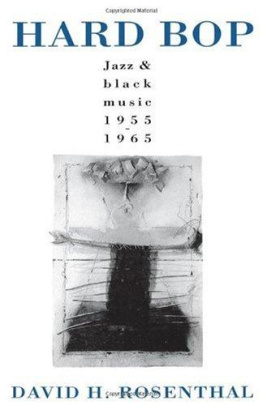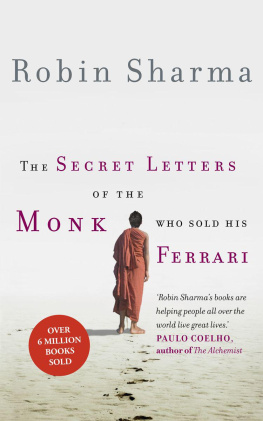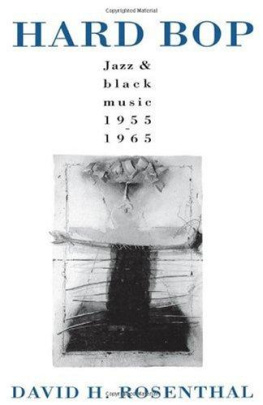
A LSO BY R OBIN D.G. K ELLEY
Freedom Dreams: The Black Radical Imagination
Yo Mamas DisFunktional!:
Fighting the Culture Wars in Urban America
Race Rebels: Culture, Politics, and the Black Working Class
Hammer and Hoe: Alabama Communists During the Great Depression
To Make Our World Anew: A History of African Americans
(with Earl Lewis)
Three Strikes: Miners, Musicians, Salesgirls, and the Fighting Spirit of Labors Last Century
(with Howard Zinn and Dana Frank)


I N M EMORY OF N ELLIE M ONK
A ND ALL THE OTHER FOLKS WHO INSPIRED AND HELPED ME WITH THIS BOOK BUT JOINED THE ANCESTORS BEFORE THEY COULD SEE THE FRUITS OF OUR LABORS , ESPECIALLY ...
M ARC C RAWFORD
T ED J OANS
S EKOU S UNDIATA
S TEVE L ACY
P ROPHET J ENNINGS
K OFI G HANABA
W ALTER B OOKER
L EM M ARTINEZ -C ARROLL
F RANKLIN R OSEMONT
I RA W INSLOW H AMILTON
A LBERTA W EBB S AUNDERS
A ND MY GRANDMOTHER ,
C ARMEN C HAMBERS
Monk: Its the High Priest of Bebop talking.
Nellie: (Laughing) Oh, God!
Monk: The one and only Thelonious Monk. The greatest pianist in the world.
Nellie: Whod you say you were?
Monk: The High Priest of Bebop.
Nellie: And?
Monk: The one and only great musician.
Nellie: And?
Monk: The greatest musician who ever lived.
Nellie: And?
Monk: Huh? How much other shit you want me to be?
Nellie: I dont know, darling, anything you want to be.
Private recording, circa 1961
I have a choice here between writing about Monk as he is, or as he seems to be, and is generally thought to be. There isnt any great difficulty about it, because both sides are fertile ground; the stories merely differ in plausibility.
Critic Paul Bacon, 1949
B enetta Smithknown affectionately as Teenyloved to visit her Aunt Nellie and Uncle Thelonious. For a kid growing up in the late 50s and early 60s, the Monks tiny ground-floor apartment at 243 West 63rd Street, must have seemed almost carnivalesque. Uncle Thelonious sat at the piano turning Christmas carols into Monk originals, or holding forth with a string of friendly put-downs or challenging questions about the ways of the world. Aunt Nellie chatted away, sometimes entertaining the kids with wild and wonderful stories, sometimes cursing booking agents, managers, and anyone else who took advantage of her dear husband, sometimes gently scolding one of her nieces not to bang on the piano. Their two children, Toot (Thelonious, Jr.) and Boo Boo (Barbara), added to the drama and the fun; they were full of energy, and their parents encouraged them to express themselves freely. The apartment and the neighborhood became a playground for Teenys six siblings, as well as her cousins and their family friends. Uncle Baby, Theloniouss younger brother Thomas, lived a couple of doors down, so his four children were always in the mix.
Like all his nieces and nephews, Teeny treated her uncle as an unclenot as some eccentric genius or celebrity. During one of her many visits in 1959 or 60, when she was about twelve years old, Teeny noticed a book of compositions by Chopin perched on her uncles rented Steinway baby grand piano. Monks piano was notorious for its clutter. It occupied a significant portion of the kitchen and extended into the front room. The lid remained closed, since it doubled as a temporary storage space for music, miscellaneous papers, magazines, folded laundry, dishes, and any number of stray kitchen items.
Teeny thumbed through the pages of the Chopin book, then turned to her uncle and asked, What are you doing with that on the piano? I thought you couldnt read music? You can read that? The challenge was on. In response, Monk sat down at the piano, turned to a very difficult piece, and started playing it at breakneck speed.
His hands were a blur, she recalled decades later. Then after he was through, he jumped up from the piano and just started grinning. So then I said, You didnt play that right.
Whaaaa? What are you talking about? I played it ten times faster than anyone could!
Teeny sassed back, It is supposed to be played adagio and you played it allegro.
Monk loved that kind of one-upmanship, the playful banter, challenges from those who werent afraid to engage him. And he was proud of his family, including Teenys burgeoning knowledge of music.
For well over half a century, the press and the critics have portrayed Monk as eccentric, mad, childlike, brooding, nave, intuitive, primitive, even taciturn. As Nat Hentoff, one of the few critics who got to know Monk, observed: Monk... became a stock cartoon figure for writers of Sunday-supplement pieces about the exotica of jazz. Pictures of Monk in dark glasses and goatee would usually be captioned Mad Monk or The High Priest of Bop. Exaggerated stories of his personal life were the substance of the articles. There was no attempt to discuss the nature or seriousness of his musical intentions. He was said to be uncommunicative, and music was the only way he could communicate. He supposedly lived in his own little world, exiled from reality, and had no interest in anything except his music and himself. The only music that interested him was his own, or the pop tunes and old standards that he transformed into his own idiom.
Even his fans and defenders made authoritative statements about Monks lack of interest and/or knowledge of other musical genresespecially classical music. In what was intended to be a genuine compliment, French critic Andr Hodeir insisted that this true jazzman had no interest in serious music. He assured his readers that no twelve-tone sirens have lured Monk away from jazz. He probably doesnt even know that such music exists. I can safely say that the gradual development of his language has been the result of intuition and intuition alone.
The myth is as attractive as it is absurd. The truth is, Thelonious Monk possessed an impressive knowledge of, and appreciation for, Western classical music, not to mention an encyclopedic knowledge of hymns and gospel music, American popular songs, and a variety of obscure art songs that defy easy categorization. For him, it was all music. Once in 1966, a phalanx of reporters in Helsinki pressed Monk about his thoughts on classical music and whether or not jazz and classical can come together. His drummer, Ben Riley, watched the conversation unfold: Everyone wanted him to answer, give some type of definition between classical music and jazz... So he says, Two is one, and that stopped the whole room. No one else said anything else. Two is one, indeed. Monk loved Frdric Chopin, Sergei Rachmaninoff, Beethoven, and Bach, and like many of his peers of the bebop generation, he took an interest in Igor Stravinsky. And his life was no more monastic than any other urban jazzmans. Indeed, it was far more colorful and interesting than a true monks. The myths surrounding Monk have gotten in the way of the truth, and the truth about his life and music is fascinating and complicatedand no less original or creative than the myth.
Monk wasnt born with some kind of natural musical knowledge and ability, nor was he entirely self-taught (though he did have perfect pitch). He received a formidable music education and worked very hard to achieve his distinctive sound. Nor did he withdraw into an isolated musical meditation, away from the world. It took a village to raise Monk: a village populated by formal music teachers, local musicians from the San Juan Hill neighborhood of New York in which he grew up; an itinerant preacher, a range of friends and collaborators who helped facilitate his own musical studies and exploration; and a very large, extended family willing to pitch in and sacrifice a great deal so that Thelonious could pursue a life of uncompromising creativity. He drew inspiration, ideas, and lessons from family members, daily experience, joys and hardships, and the city itselfits sounds, its colors, its drama. Hence this book is not just about him, or his music; rather, it is an intimate story about the folks who shaped himhis hardworking and devoted mother, Barbara, his wife, Nellie, and her entire family, their children, his brother and sister and their kids, his musical kith and kin, his patron saint and friend the Baroness Nica de Koenigswarter, his childhood friends and first crushes, the people of the local community center, his ancestors and the legacy they bestowed upon him; not to mention the agents, managers, producers, critics, judges, cops, attorneys, and others whose actions and decisions directly affected Monks livelihood.
Next page
